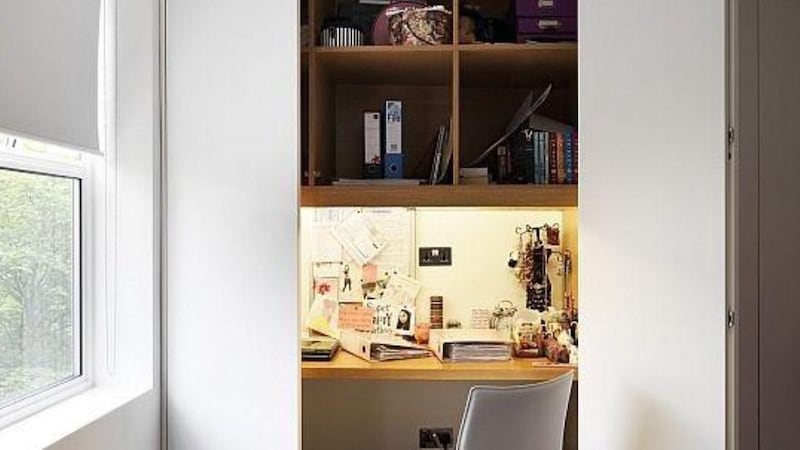Minimise distractions
Mobile phones, tablets, Xbox and PlayStation, among a host of other technology, are a constant temptation and a source of stimulation for kids of all ages. But these devices completely inhibit their ability to think laterally and to solve problems. So it’s vital we try to find a way to help minimise these distractions for our kids as much as we can.
I would suggest removing TVs and any gaming consoles from the areas your child intends to study in. Especially if they currently live in a bedroom. Not only are they a total distraction but they have a negative impact on sleep quality too. If removing them completely isn’t an option, try to find a way to conceal them. This might require having some joinery built to house everything when not in use.
For mobile devices, an easy-to-implement idea is to have a spot in the house where everyone puts their tablets, phones and so on when they come home. In the interest of fairness, this really should apply to Mum and Dad too. I met someone recently who has a rule that all devices are left on the mantelpiece as soon as everyone gets home, and they stay there until the next morning.
Make sure the furniture is appropriate
Your child is going to be sitting for long periods of time over the next nine months, so it’s essential that their posture is good to avoid any back or neck strain.
A good chair and desk that is at the right height are essential. So often our children are merely using a spare chair from elsewhere in the house, but ideally the chair should have an adjustable seat.
To find the right position the chair height should be adjusted so that with your child’s arms above the desk, their elbows should be at 90 degrees. Thighs should be parallel to the floor, with feet flat on the floor. If your child’s feet can’t reach the floor, place a box underneath them.
When selecting the desk, ideally it should be large enough to allow them to have all of the material that they need laid out on it. Make sure the desk is at the correct height. For taller kids you may have to raise the desk up, I’ve seen innovative solutions such as propping the desk up on bricks. Whatever solution you come up with, make sure it’s stable.
Let them be creative
Children prefer to learn in different ways. Some are auditory, others visual and others need to move to learn. Take this into account when planning your child’s study space. I remember studying and lining my walls with large sheets of paper that I could write on and leave in place. I found this so helpful and a really enjoyable way to absorb what I needed to learn.
Understand how your child works best and work out solutions together. Most importantly, give them a little freedom to find solutions that work for them even if it means making what you consider to be a mess.
Make sure the room is healthy
Proper ventilation and heating are essential. If there are issues like damp or mould, now is an excellent time to have these fixed. Your child will be spending lots of time in the room so dry-lining walls or improving ventilation are worthwhile investments.
Lighting is also important. Make sure that there is good task lighting. An adjustable desk light is ideal. And having blinds or some way of dealing with glare is also important for brighter days.
Help them to be organised
Have a good clear-out of the room before your child goes back to school. Remove anything that is not essential. Clutter is extremely distracting so it’s vital that the space is as free from stuff as possible.
Make sure there are adequate supplies of pens, pencils, notebooks and paper, and have a designated place to store surplus supplies so they can easily be found when needed.
Invest in some open shelving where everything your child needs can be stored. Purchase a pin board or, even better, a magnetic whiteboard. These are fantastic for displaying visual reminders and encouraging alternative learning methods.
Create boundaries
If at all possible try to set up a study space away from your child’s bedroom. This will help to establish clear boundaries by creating separation between study and downtime.

If space is an issue and the bedroom is the only area to work in, try to come up with a way to conceal the desk area for times when your child is not studying. You could have a desk built into a storage unit that closes up when not in use. Or a more cost-effective solution is to install a ceiling-mounted track to take a curtain that can be pulled across the desk to hide it away. Alternatively, invest in a desk with a lift-up top that can be closed over to hide everything when not in use.
Denise O'Connor is an architect and design consultant @optimisedesign











